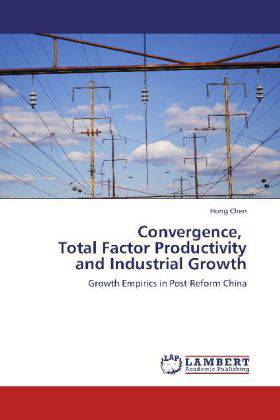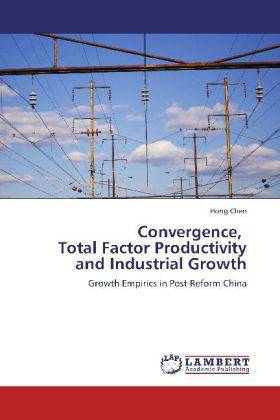
- Afhalen na 1 uur in een winkel met voorraad
- Gratis thuislevering in België vanaf € 30
- Ruim aanbod met 7 miljoen producten
- Afhalen na 1 uur in een winkel met voorraad
- Gratis thuislevering in België vanaf € 30
- Ruim aanbod met 7 miljoen producten
Zoeken
Convergence, Total Factor Productivity and Industrial Growth
Growth Empirics in Post-Reform China
Hong Chen
Paperback | Engels
€ 103,45
+ 206 punten
Omschrijving
This thesis examines the Chinese economy by focusing on three issues: convergence, total factor productivity (TFP) and industrial growth. Based on China s 28 provinces, municipalities and autonomous regions (henceforth provinces ) over 1979-2004, the analysis of convergence discovered the share of physical capital in China s output of 0.23 and convergence rate of 5.6 per cent per annum. The analysis of TFP found that TFP growth in the Eastern and Central Zones was accomplished mainly through technical progress rather than efficiency improvement, while the pattern was completely different in the least developed Western Zone. For China as a whole, TFP grew at a rate of 2.75 per cent per annum, which accounted for 30.02 per cent of its real GDP growth. And the study of industrial growth of 26 industries in 9 provinces of the Eastern Zone over 2001-2005 suggested that the dynamic externalities, such as industrial specialization, competition and industrial spillovers across provinces, played an important role in province-industrial growth. Province-specific externalities, including exports, education, local market size and transport infrastructure, spurred industrial growth.
Specificaties
Betrokkenen
- Auteur(s):
- Uitgeverij:
Inhoud
- Aantal bladzijden:
- 260
- Taal:
- Engels
Eigenschappen
- Productcode (EAN):
- 9783848422807
- Verschijningsdatum:
- 6/03/2012
- Uitvoering:
- Paperback
- Afmetingen:
- 150 mm x 220 mm
- Gewicht:
- 361 g

Alleen bij Standaard Boekhandel
+ 206 punten op je klantenkaart van Standaard Boekhandel
Beoordelingen
We publiceren alleen reviews die voldoen aan de voorwaarden voor reviews. Bekijk onze voorwaarden voor reviews.








